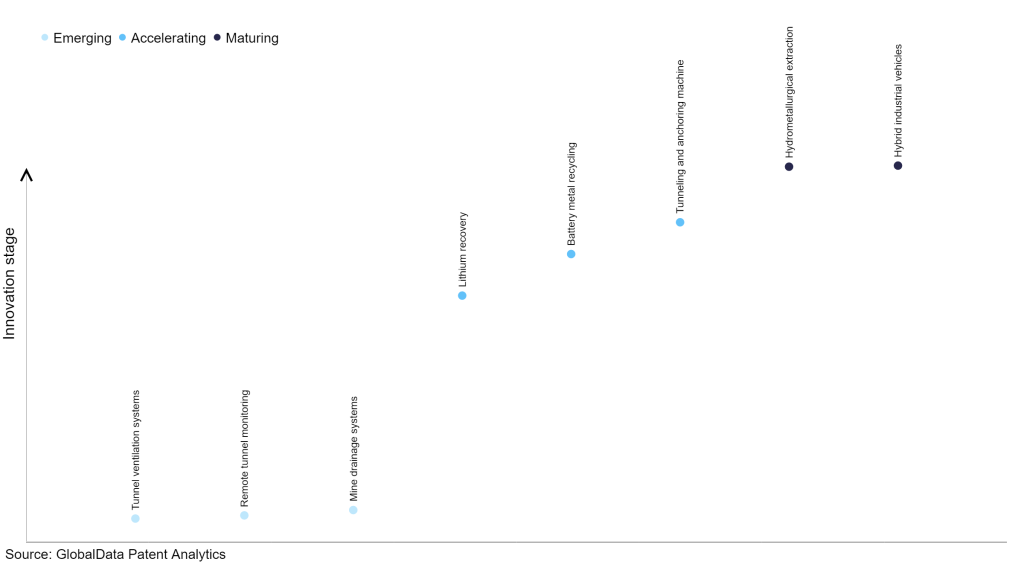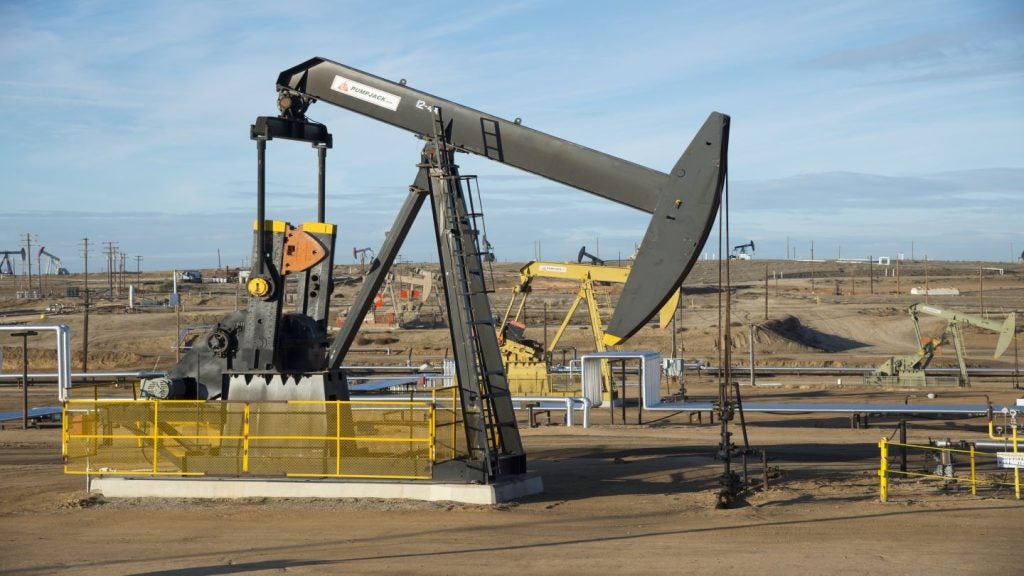The mining industry continues to be a hotbed of patent innovation. Activity is driven by the need for improved productivity, safety, cost control and sustainability, and the growing importance of recycling in order for sufficient metals and materials to be available to support the global energy transition. Furthermore, with the growing demand for zero-emission vehicles and the need to establish a circular economy, the battery recycling industry is bound to see new and prosperous growth opportunities. In the last three years alone, there have been over 3,000 patents filed and granted in the mining industry, according to GlobalData’s report on Innovation in mining: lithium recovery. Buy the report here.
However, not all innovations are equal and nor do they follow a constant upward trend. Instead, their evolution takes the form of an S-shaped curve that reflects their typical lifecycle from early emergence to accelerating adoption, before finally stabilizing and reaching maturity.
Identifying where a particular innovation is on this journey, especially those that are in the emerging and accelerating stages, is essential for understanding their current level of adoption and the likely future trajectory and impact they will have.
45+ innovations will shape the mining industry
According to GlobalData’s Technology Foresights, which plots the S-curve for the mining industry using innovation intensity models built on over 81,000 patents, there are 45+ innovation areas that will shape the future of the industry.
Within the emerging innovation stage, tunnel ventilation systems, remote tunnel monitoring, and mine drainage systems are disruptive technologies that are in the early stages of application and should be tracked closely. Lithium recovery, battery metal recycling and tunneling, and anchoring machine are some of the accelerating innovation areas, where adoption has been steadily increasing. Among maturing innovation areas are hydrometallurgical extraction and hybrid industrial vehicless, which are now well established in the industry.
Innovation S-curve for the mining industry

Lithium recovery is a key innovation area in mining
As environmental regulations are becoming more stringent, need for developing new technologies to recover metal and manage process waste is increasing. Companies are, therefore, offering proprietary lithium recovery systems to recover viable metal. About 95% of lithium-ion battery can be recycled into new batteries with two main methods for recovering such as pyrometallurgy-based smelting process and a hydrometallurgy-based leaching process. Several steps are involved in this process, including leaching, acid or alkali addition, electromembrane process, and carbonation. The recovered metals must be processed further after smelting or leaching in order to be used to make new batteries.
GlobalData’s analysis also uncovers the companies at the forefront of each innovation area and assesses the potential reach and impact of their patenting activity across different applications and geographies. According to GlobalData, there are 30+ companies, spanning technology vendors, established mining companies, and up-and-coming start-ups engaged in the development and application of lithium recovery.
Key players in lithium recovery – a disruptive innovation in the mining industry
‘Application diversity’ measures the number of applications identified for each patent. It broadly splits companies into either ‘niche’ or ‘diversified’ innovators.
‘Geographic reach’ refers to the number of countries each patent is registered in. It reflects the breadth of geographic application intended, ranging from ‘global’ to ‘local’.
[datawrapper id=9futn title='Patent volumes related to lithium recovery' type='lgp1']Nemaska Lithium, ENEOS and Metso are some of the leading patent filers in lithium recovery. Metso recovers high-value battery raw materials using proprietary hydrometallurgical technology in an advanced battery black mass recycling process, which recovers nickel, cobalt, and lithium from batteries after mechanical separation and optional thermal treatment. The overall goal of hydrometallurgical processing is to close the loop on battery raw materials.
In terms of application diversity, Aurubis leads the pack, while Grinm Advanced Materials and Korea Zinc stood in the second and third positions, respectively. By means of geographic reach, Nemaska Lithium held the top position, followed by Nippon Steel and Aurubis.
To further understand the key themes and technologies disrupting the mining industry, access GlobalData’s latest thematic research report on Mining.









